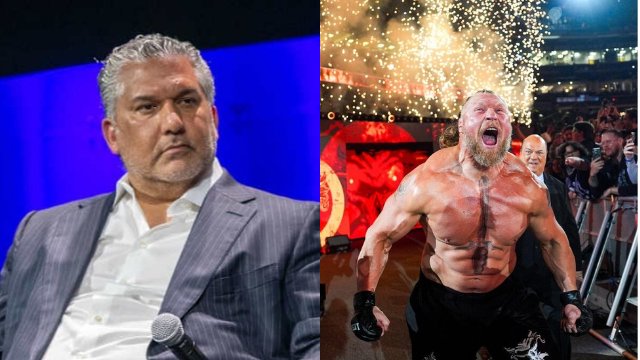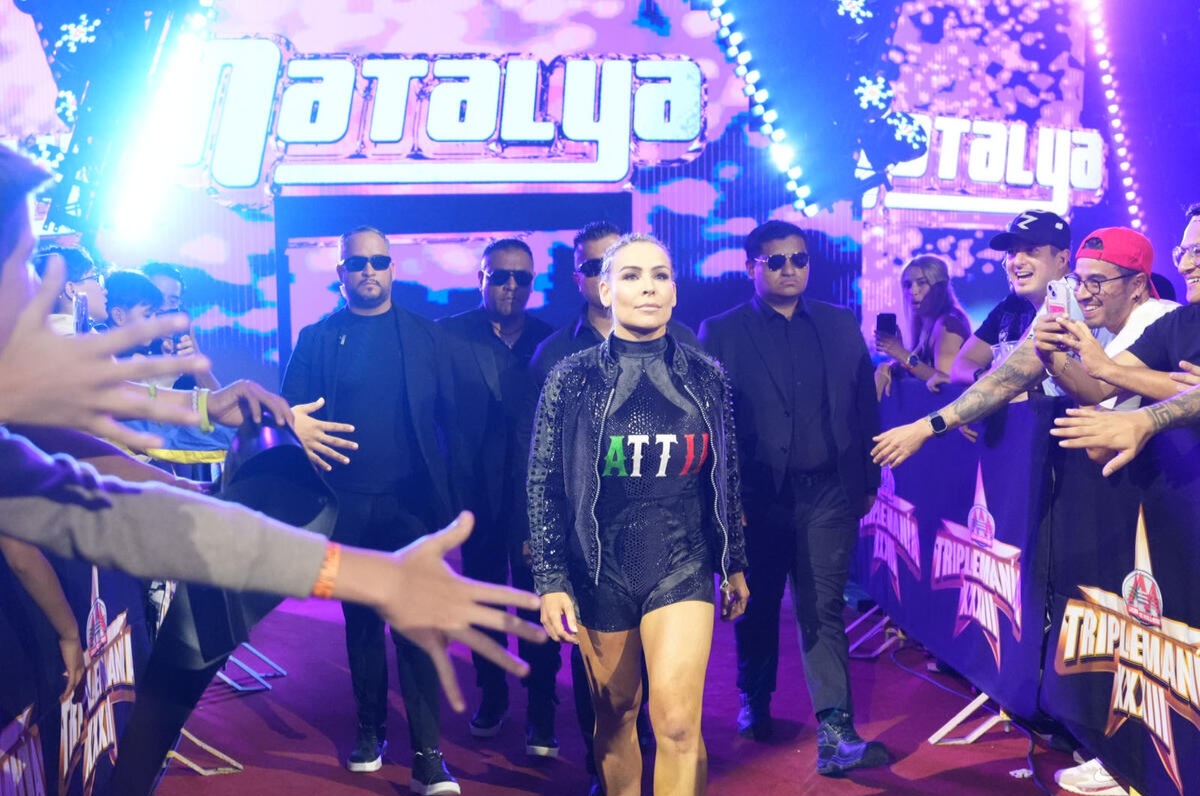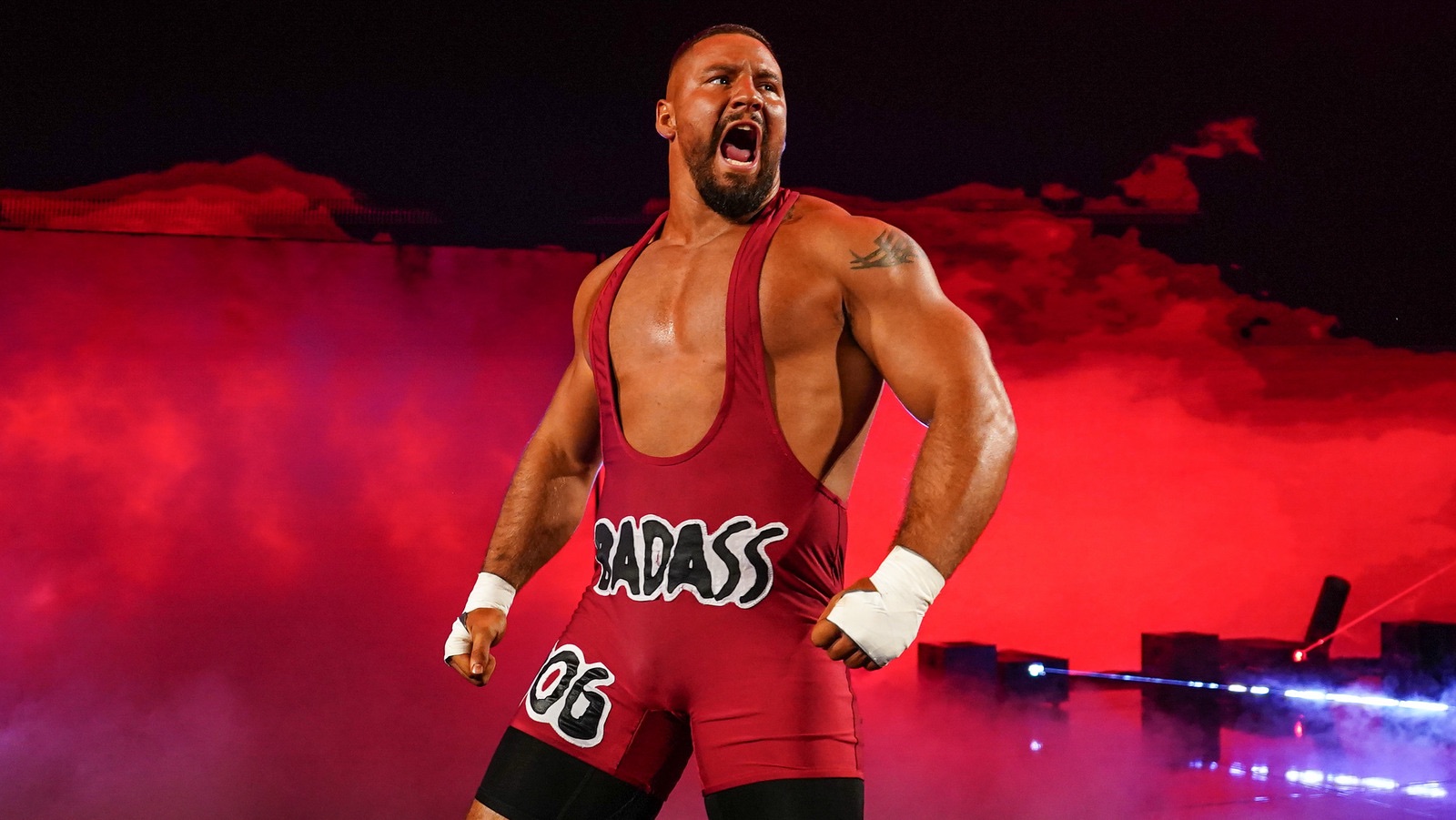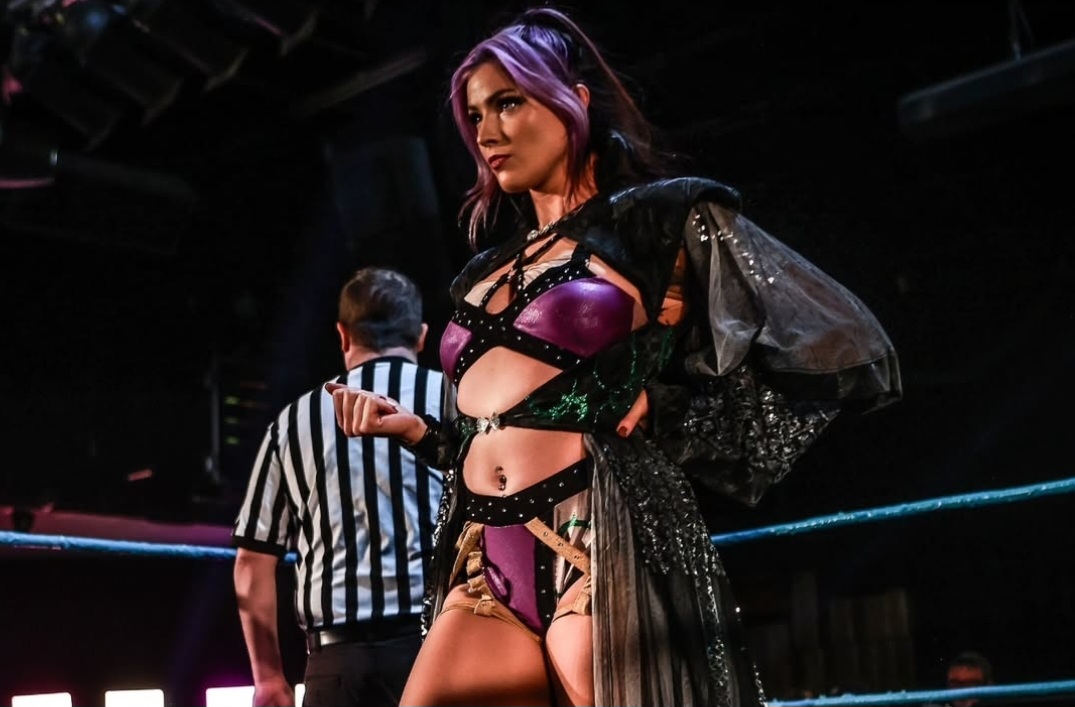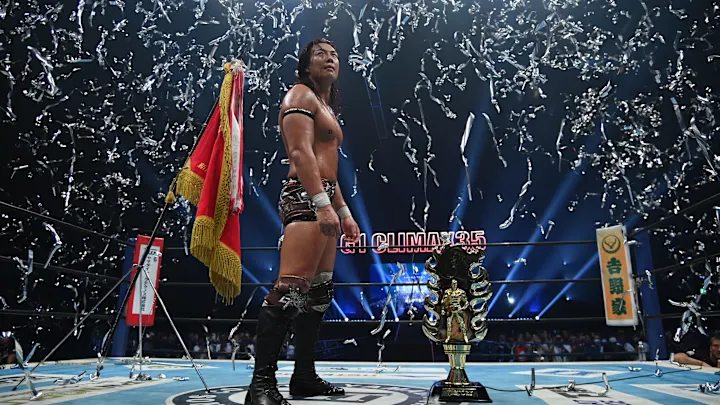
The dust seems to have finally settled on what was a divisive reaction to Konosuke Takeshita’s 2025 G1 Climax victory. Whether it was his Ring of Honor World Championship match against Bandido, his match against Kenny Omega for the AEW International Championship, or his many clashes over the NEVER Openweight Championship, 2025 has certainly been a year of success for The Alpha. Entering and winning his first G1 Climax is the latest feather in his cap, accomplishing a lifelong goal of achieving glory on the Cerulean Blue, though to a mixed response across the globe.
In the west, reactions varied. Some rejoiced in Takeshita being pushed as the standout star he is, further cementing himself as a major player in terms of both the calibre of his in-ring work and sheer superstardom his presentation conveys. Others expressed that sense of joy, only to feel it dampened upon his return to AEW. There, his G1 win was mentioned either as a passing comment by the announce team or via a brief highlight reel in a picture-in-picture format as he walked to the ring.
It’s a foul tendency of AEW to do this, to acknowledge talents’ accolades in partner promotions in passing, or to ignore them outright. Lest we forget Takeshita’s reign as NEVER Openweight Champion, whilst also being AEW International Champion. In this instance, he was featured on AEW television entering the ring with solely the latter title on multiple occasions. The times when the NEVER Openweight title did make an appearance, it was via a mention on a lower-third name card, finally appearing physically well after Takeshita had broken the record of successful defences for the title. It was too little too late, as he lost the title to New Japan’s Boltin Oleg not long after. These brief appearances with little to no context left audiences unfamiliar with New Japan or AEW talent’s involvement in the company in the dark as to their significance. Considering the level of partnership between the two promotions, co-promoting events like Forbidden Door, having talent make appearances on AEW TV or during New Japan’s many tournaments, you’d think it would be paramount to comment on the interpromotional crossovers like championship wins or tournaments appearances with greater reverence and consistency.
We can hope that as the weeks roll ahead and we draw closer to Takeshita challenging for the IWGP World Heavyweight Championship, that AEW’s announce team emphasise the significance of his tournament win and what a championship win would mean for Takeshita and the three companies he is contracted to. Being contracted to three promotions, being the world champion of one while making regular appearances for another and sporadically returning to the third–it’s something that hasn’t been done in recent memory, to this degree. We’ve had competitors challenge for and win titles in other promotions (just look at Hiromu Takahashi’s GHC Junior Heavyweight title win recently), but in Takeshita’s case, given the platform he has with AEW and the wider western wrestling world it would be done on a far greater scale, with more eyes on him and his achievement.
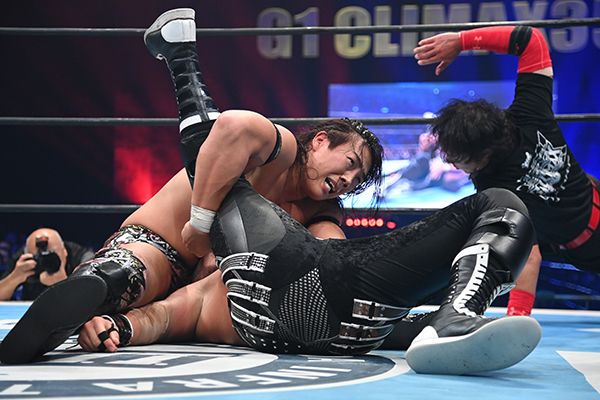
In Japan, reactions seemed to be far more negative. Fans were in uproar regarding Takeshita’s win, especially considering he prevailed in the final over EVIL and the broader House of Torture contingent, extremely popular acts in the domestic market. Despite being contracted to New Japan Pro Wrestling, Takeshita is still regarded as an outsider due to him starting his career in DDT and his current prevalence as part of AEW’s roster. Having Takeshita win, as opposed to an up-and-coming main event calibre talent like Yota Tsuji, Yuya Uemura, Boltin Oleg, Ryohei Oiwa, or even a member of the old-guard who has yet to be given such a role (like Taichi) shows that New Japan management does not have faith in these competitors. If they don’t have faith in them, then why should the fans, both domestically and internationally?
New Japan’s need to rely on an outside name and the buzz of their partner promotions over establishing their own stars is further evidenced by the previously mentioned homegrown names being placed in prominent positions in major event match cards, only to lose. Doing so only kills any sense of momentum and buzz these wrestlers had spent the bulk of that particular tour building up. A prime example of this happening recently sees us look to New Japan’s Junior Heavyweight division, with this year’s Best of the Super Juniors winner, TMDK’s Kosei Fujita losing his IWGP Junior Heavyweight Championship match to the defending champion El Desperado. The rising star losing to a long-established name could be seen as a chapter of the broader story, showing the setbacks that Fujita has had to overcome in order to finally win championship gold as a singles competitor. On the other hand, I’m of the belief that the company should have struck while the iron was hot, capitalising on the momentum of the BOSJ win and his popularity amongst the fans domestically and abroad. However, this loss resulted in a brief period of stagnation and ultimately returning to the Junior Tag division where he was prior to his tournament win. It comes across like New Japan finding a new toy only and discarding it to the side once they lose interest, much to the frustration of fans longing for something fresh.
This is where Takeshita’s G1 win can go one of two directions: either the company capitalises on his status as an “outsider” in the eyes of fans, creating a compelling narrative from it, or they once again drop the ball and carry on as they are, to fan frustration.
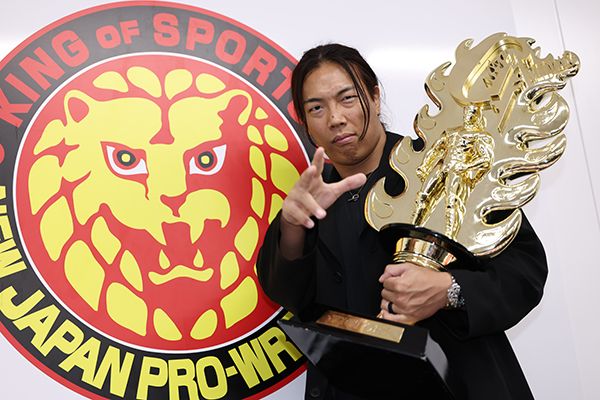
As we look to the future where Takeshita is concerned, we can in turn look to the past, to see where and how New Japan has previously treated competitors deemed “outsiders” and/or “invaders.” This isn’t to say these should be an influence on Takeshita’s run, but perhaps more of a retrospective on how these individuals/runs differ from his at this current point. Looking back to 2014, we saw AJ Styles enter New Japan, join Bullet Club, and win the IWGP Heavyweight Championship from Kazuchika Okada in short order. In 2019, it was Jon Moxley who entered the company, winning the IWGP US Heavyweight Championship in his first match, against Juice Robinson. Even if we look to present-day New Japan, we have the returning Yuto-Ice and Oskar returning from excursion, dominating in their return match, and securing a future IWGP Heavyweight Tag Team Championship match against Taichi and Ishii (the latter of which has spent most of his summer in AEW, with his IWGP Heavyweight Tag Team Championship missing from his presentation, but I digress). Where these outsiders had tangible championship/tournament success, coupled with generous amounts of fan favour, it is this latter portion where I have mentioned Takeshita falls short for Japanese fans.
It is here we can look to another partner of New Japan and see where this angle of the “invader” is being leaned into–a source for the company to take notes on in terms of how it could/should be done. We look to STARDOM, and the “Sun God,” Sareee.
Responses to Sareee’s presence in STARDOM have also been mixed, but with a far greater degree of engagement from fans, rather than abject apathy. Whether you love her or hate her as a character, fans are far more involved with some seeing her in-ring style as pushing the boundary of wrestling within the company, beyond the “Idol” association it is sometimes placed beside. In her own words to Tokyo Sports, her presence in the company is to combat the fact that “STARDOM is overwhelmingly lacking in the fundamental essence of women’s wrestling–the fight”. Even though she did not go on to win the 5-Star Grand Prix or even reach the finals, her presence in the tournament was a consistent talking point. From her B Block match where she defeated Momo Watanabe, to Momo exacting revenge and claiming a win in return by besting the Sun God in the semi-finals and eventually win the whole tournament–it was Sareee’s presence as the invader, the disruptor, that allowed the tournament to flourish and give the eventual winner that much-needed momentum.
Like Sareee, Takeshita is seen as the outsider due to their strong ties and involvement with other promotions giving a “stink” about them in the eyes of the company faithful, for lack of a better phrase. For New Japan and Takeshita to make the most of this, they must lean into it, especially considering The Alpha has gone on record to say that “I am not NJPW’s Takeshita here, or AEW’s Takeshita there, I’m just Konosuke Takeshita and I have something to show.” The current issue is that his lacking presence on the tours that have followed the G1 haven’t given him the platform to show what that “something” is, as we get closer to his championship match. By leaning into it, for example, through pre-tapes/VTRs that air during New Japan’s shows, he can provoke the fans to view him as the thing he says he is. He is not a company man. He just wants to wrestle, to be the best, to beat those the fans adore and prove he is The Alpha simply because he can. In doing so, this will only end up bolstering support for New Japan’s budding main-eventers and for the champion that defends the title against him at King of Pro Wrestling on October 13th.
Regardless of his limited appearances after the victory, portraying Takeshita as an outsider throughout the tournament would at least have prevented the situation New Japan faced in the G1 Climax Final, where the company’s most despised heel, EVIL, ended up receiving a surprising amount of support against The Alpha. Of course, simply ensuring that House of Torture’s leader never reached the final might have been an equally effective solution.
Looking ahead to that show in particular, Takeshita claiming his title match earlier than the intended date of January 4th at Wrestle Kingdom replicates last year’s G1 winner (and current IWGP World Heavyweight Champion) Zack Sabre Jr. I can understand the desire, in terms of the in-story reason, to want the match sooner and to walk into/out of the Tokyo Dome as champion. Even from a venue standpoint, I can see why. Personally I think I may prefer Ryogoku Sumo Hall to the Tokyo Dome in some ways for the more intimate atmosphere and the aesthetic uniqueness of the building, not to mention the recollection of iconic images in that venue. Images like Masahiro Chono’s G1 win in 1991, with the New Japan faithful in attendance throwing the seating cushions towards the ring in celebration, a gesture usually reserved for victories in Sumo competition.
Nevertheless, part of me does hope that the “earlier challenge” we’ve seen this year and last year does not become a recurring trend. It was nice the first time as a welcome change of pace, bucking tradition and all, and it makes sense this year for Takeshita as the outsider to not care for tradition and do as he pleases. In terms of the future, I hope New Japan stick to the tradition of the G1 winner challenging the champion at Wrestle Kingdom, as it gives them plenty of time to build a compelling narrative as we’ve seen in the past- thinking back to Kenny Omega in 2016/17, Naito and Ibushi’s Double Gold Dash in 2020, etc. Making the early challenge a common thing would make it less special and meaningful the more it is done, and with the year that New Japan has had in terms of its decreased attendance rates compared to previous years, this change of tradition could divide the fans further.
As for ZSJ himself, he finds himself a two-time champion now, winning the title at last year’s King of Pro Wrestling show, defeating Tetsuya Naito, before losing the title to Hirooki Goto. However, with an injury cutting Goto’s reign short, Sabre would recapture the title from him and enter the G1 as both the current IWGP World Heavyweight Champion, and the defending G1 winner hoping to do the double and win it a second year in a row. He would make it all the way to the semi-finals, losing to Takeshita in a hard-fought battle that included Takeshita delivering a top-rope variation of his spinning Falcon-Arrow, “Raging Fire”, only for it to be more of a sheer-drop Brainbuster. This rough landing for Sabre would spell the end for his G1 campaign, giving Takeshita the opportunity to seal his place in the final with a wave of momentum behind him after defeating the world champion.
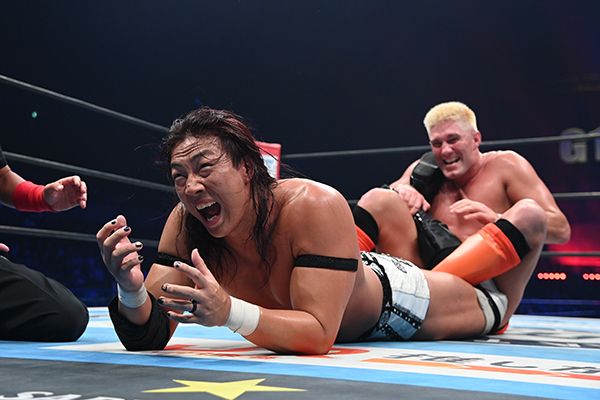
Looking ahead further to Wrestle Kingdom, there are many questions to be asked in terms of who could be champion at the time, and whether the World title match will be the main event of the show or if Hiroshi Tanahashi’s retirement match will take precedence over it. If Tanahashi and the rest of the company’s management and booking team do the right thing, the night will end with the world title match. It feels right to conclude the show by shining a light on the present day of New Japan, ultimately looking ahead to the individual who is steering the ship into the near future as the promotion’s top champion. It’s far too early to answer these questions and hypotheticals, however my prediction is that regardless of who the champion is (whether it be ZSJ, Takeshita, or even Ren Narita), they will be defending against Yota Tsuji. As for Tanahashi’s retirement match, my predictions align with much of the fan consensus which sees the President of the company facing off against the seeming successor to Tanahashi as the shining star of Hontai, “The Heat Storm” Yuya Uemura.
It’s certainly an interesting time for New Japan in terms of how they’re handling the fallout from the G1 Climax tournament and how this will lead into the tail-end of the year, setting up for Wrestle Kingdom at the start of 2026. Regardless of what happens, I’m sure there will be plenty to talk and write about. All in due time.

